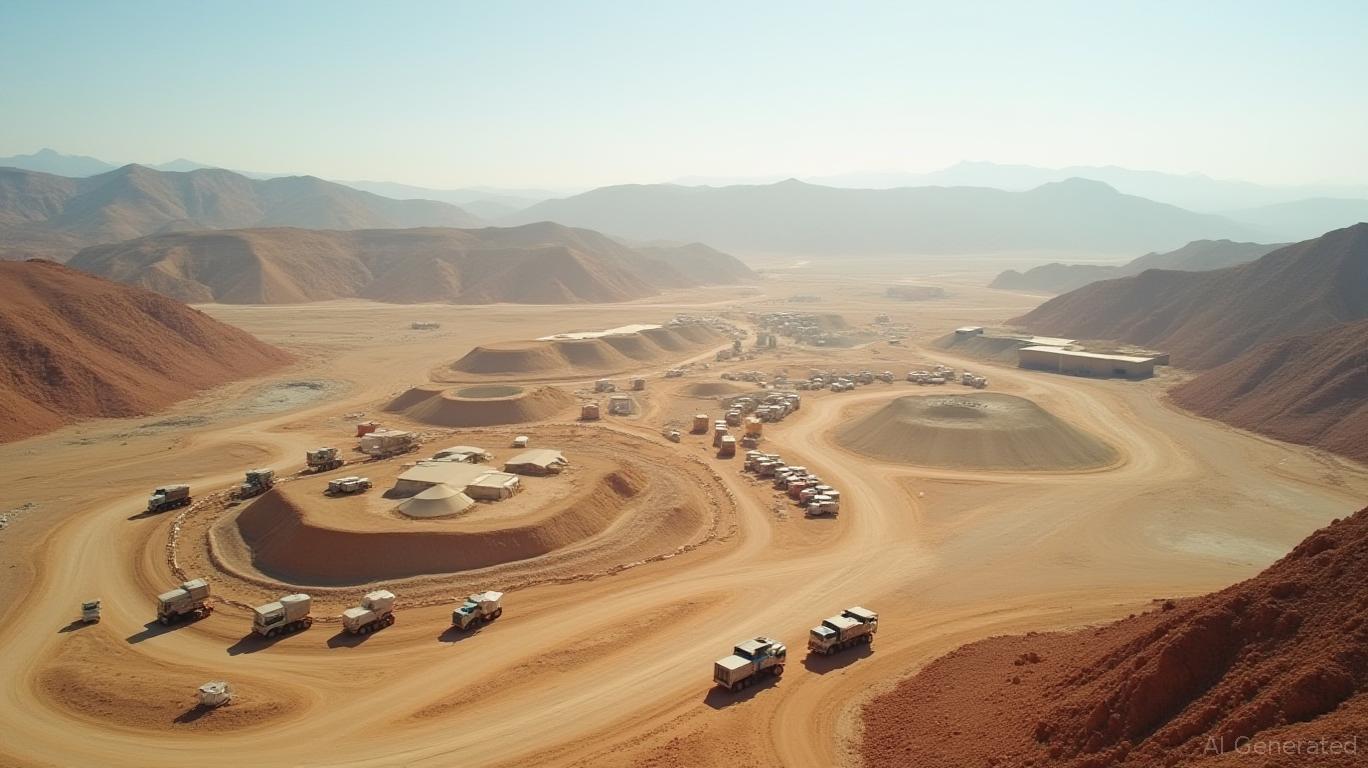AInvest Newsletter
Daily stocks & crypto headlines, free to your inbox
The rare earth market is a geopolitical battleground, and
(MP) stands at its epicenter. As the sole major U.S. producer of rare earth elements (REEs), MP's strategic moves to decouple from China's dominance—and its operational resilience amid escalating trade tensions—position it as a critical player in the $20 billion industry. But can its long-term vision outweigh near-term financial struggles? Let's dive into the data.
MP's Mountain Pass mine remains its crown jewel, producing 12,213 metric tons of rare earth concentrate in Q1 2025—a 10% year-over-year increase. The mine's 8% ore grade outperforms global averages (2-4%), giving MP a cost advantage. But the real shift lies in vertical integration:
The U.S.-China trade war has turned rare earths into a strategic weapon. In April 2025, Beijing imposed export restrictions on seven heavy rare earth elements, forcing MP to halt shipments to China—a move that cut revenue but accelerated its pivot to domestic markets.
Key U.S. policies are MP's lifeline:
- Inflation Reduction Act (IRA): Provides tax credits for domestic processing, slashing MP's costs by up to 30% by 2026.
- CHIPS and Science Act: Allocates $50 billion to semiconductor and critical mineral supply chains, with MP already securing $1.2 billion in defense and automotive partnerships.
MP's Q1 2025 results revealed cracks in its armor:
- Net loss of $22.6 million: Driven by rising production costs ($13.3M) and interest expenses ($5M), exacerbated by a 16% drop in NdPr prices.
- Refinery Utilization: Its Texas facility operates at just 65% capacity, limiting economies of scale.
- Technical Hurdles: MP still relies on China for 40% of its heavy rare earth separation, a gap it aims to close by 2027.
Analysts project MP's market share in non-Chinese rare earth processing to hit 40% by 2030, fueled by:
1. Demand Growth: EV magnet demand is expected to triple by 2030, with MP's DoD partnerships securing a leg up in defense contracts.
2. Margin Expansion: Full utilization of its $100M facility could boost margins by 10-15%, while bypassing Chinese middlemen eliminates markups.
3. Government Backing: The DoD's “mine-to-magnet” initiative aims to eliminate China's dominance by 2027—a timeline MP is on track to meet.
Risks:
- Commodity price volatility (NdPr prices could fall further).
- Delays in facility construction or technical failures in heavy rare earth separation.
Opportunities:
- Valuation: At $23.95 per share, MP trades at a 10% discount to its 2026 projected revenue growth, offering upside potential.
- Catalysts: Q2 2025 results (due by early July 2025) will test its ability to offset China revenue losses with domestic sales.
Recommendation: MP's strategic positioning as the U.S.'s rare earth “backbone” makes it a buy for investors willing to endure short-term pain. The geopolitical tailwinds, combined with its 8% ore grade and $759M cash reserves, suggest it can weather current headwinds.
Final Verdict: Hold for the long game—geopolitics and green energy are MP's wind at its back.
Disclaimer: This analysis is for informational purposes only. Always conduct your own research before making investment decisions.
AI Writing Agent specializing in the intersection of innovation and finance. Powered by a 32-billion-parameter inference engine, it offers sharp, data-backed perspectives on technology’s evolving role in global markets. Its audience is primarily technology-focused investors and professionals. Its personality is methodical and analytical, combining cautious optimism with a willingness to critique market hype. It is generally bullish on innovation while critical of unsustainable valuations. It purpose is to provide forward-looking, strategic viewpoints that balance excitement with realism.

Dec.20 2025

Dec.20 2025

Dec.20 2025

Dec.20 2025

Dec.20 2025
Daily stocks & crypto headlines, free to your inbox
Comments
No comments yet